St. ANDREWS, FALKLAND & DUNFERMLINE |
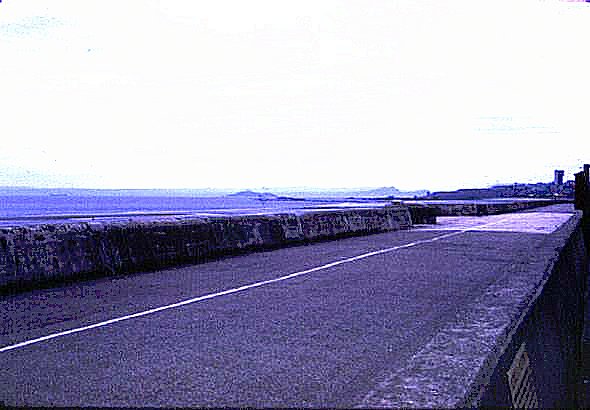 |
On Sunday, July 21, we boarded a bus with a "Tour 10" sign displayed in the window. At a rest-stop in Kirlcaldy, Pat and I took pictures back across the Firth of Forth towards Edinburgh. |
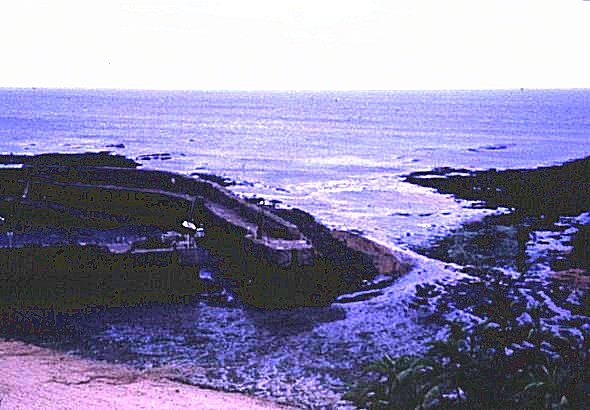 |
A photographic opportunity was not missed as we approached the fishing village of Crail at low tide. |
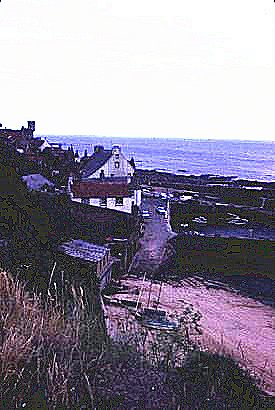 |
This is Crail village at low tide. |
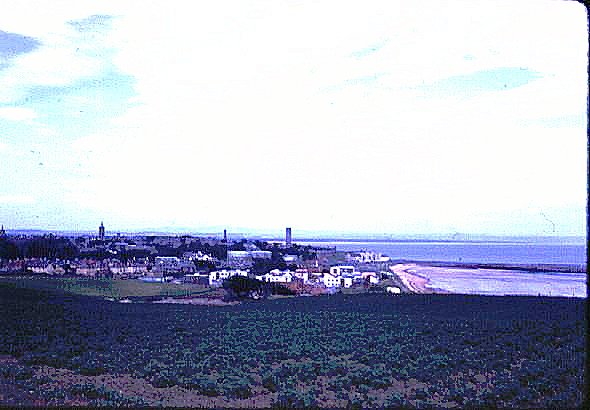 |
St. Andrews, our first major destination, lies about 56 miles northeast of Edinburgh. |
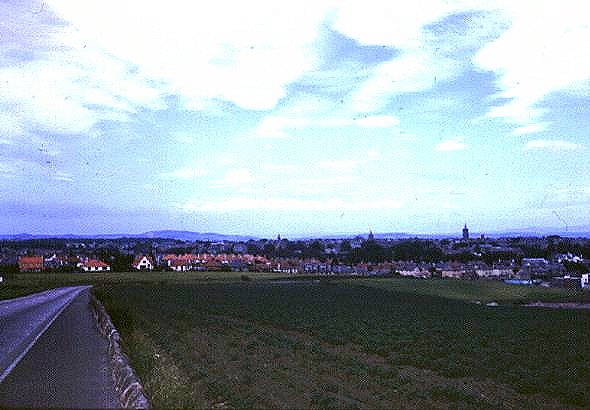 |
The citizens of St. Andrews were very miffed, when King James II banned the game of golf in 1457 because archery practice was being neglected. |
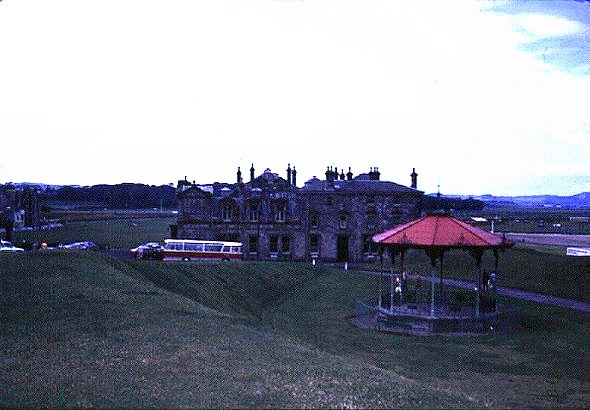 |
The Society of St. Andrews Golfers was formed in 1754. When royalty began to share this oldest site for golf, The Royal and Ancient Golf Club of St. Andrews was formed. We stood on a rise towards the North Sea above the first tee to take this picture of the club house. |
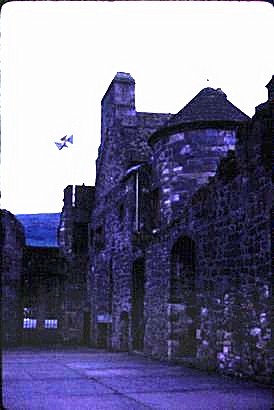 |
FALKLAND PALACE was built by James IV and V. It was the country residence of the Stuart kings and queens when they hunted deer and wild boar in the Fife forest. Mary Queen of Scots was born nearby before the death of her father James V in this palace. |
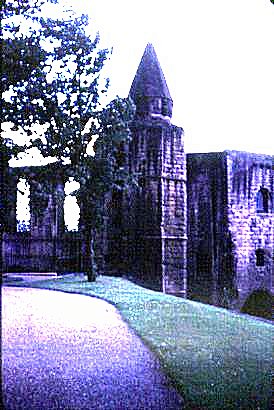 |
The palace contains fine portraits of the Stuart monarchs and two sets of 17th century tapestry hangings. |
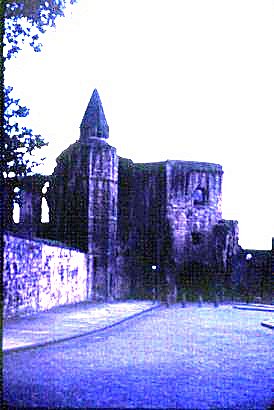 |
Falkland Palace is 11 miles north of Kirlcaldy. On this tour, we noted three herbaceous borders and trees which surrounded the main lawn of the palace. |
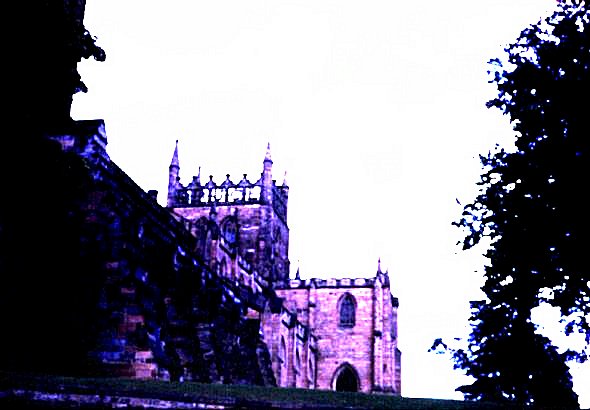 |
DUNFERMLINE ABBEY succeeded Iona as the burial place of Scottish kings. The remains of Robert the Bruce are beneath a brass marker at the pulpit. A large stone "B R U C E" dominates the top of the old abbey. |
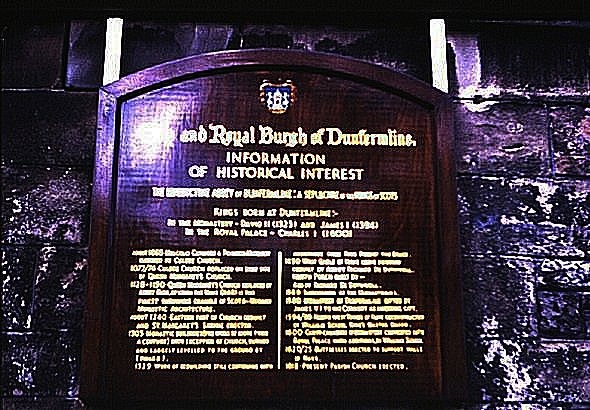 |
Dunfermline Abbey is the remains of a Benedictine abbey built by King Malcolm III, founded by his Queen Margaret in the 11th century, and developed by their son David I. |
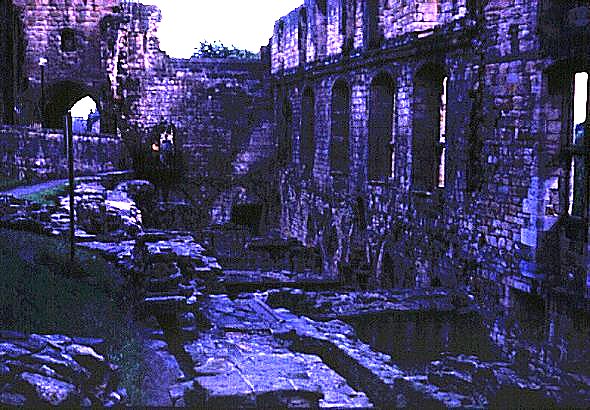 |
On a precipice next to the abbey is the ruin of the Royal Palace built for James VI and his Queen in the 16th century. |
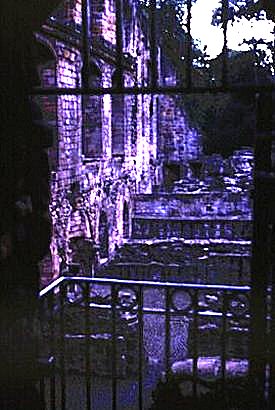 |
The Castle of Dunfermline was the birthplace of Charles I, the last monarch born in Scotland. |
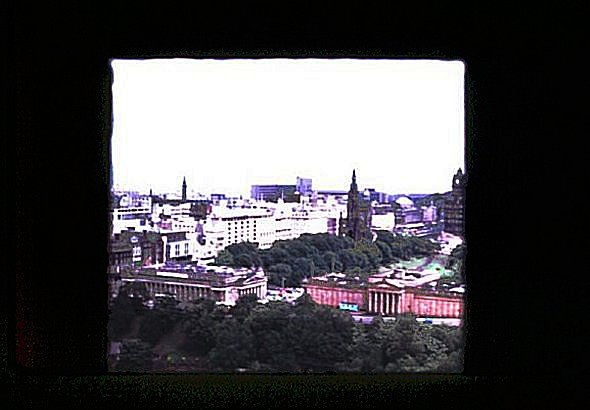 |
As we looked through a gun portal in the castle, we spotted the Scott Monument (erected in 1844) on Princes' Street in Edinburgh. |
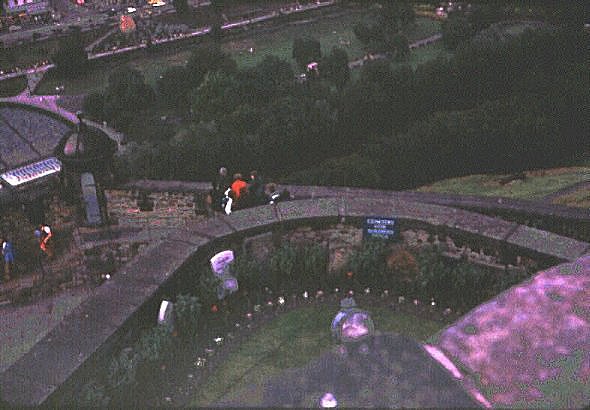 |
The castle grounds are the site of a cemetary for soldiers' dogs. [A theatre is to the left of the photo.] |
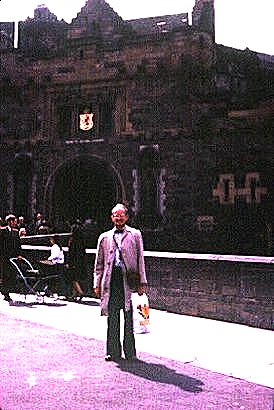 |
Outside the gate of the castle is a patch of Canadian soil. I stood there as Pat took my picture. |
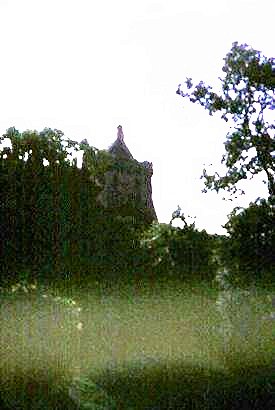 |
James VI of Scotland (& I of England) fled the castle by being lowered from a window in this section. |